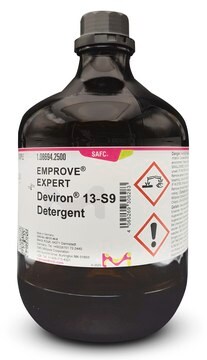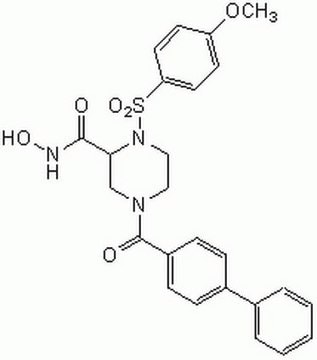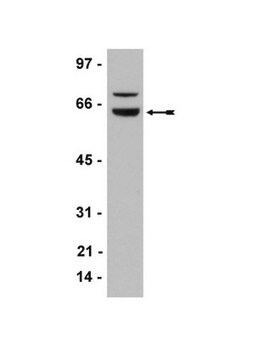ABS2129
Anti-IP3R 1
from rabbit
Synonyme(s) :
Inositol 1, 4, 5-trisphosphate receptor type I, IP3 receptor isoform 1, IP-3-R1, InsP3R1, Type 1 inositol 1, 4, 5-trisphosphate receptor, Type 1 InsP3 receptor
About This Item
Produits recommandés
Source biologique
rabbit
Niveau de qualité
Forme d'anticorps
affinity isolated antibody
Type de produit anticorps
primary antibodies
Clone
polyclonal
Espèces réactives
human, rat, bovine, mouse, chicken
Technique(s)
immunohistochemistry: suitable (paraffin)
immunoprecipitation (IP): suitable
western blot: suitable
Isotype
IgG
Numéro d'accès NCBI
Numéro d'accès UniProt
Conditions d'expédition
ambient
Modification post-traductionnelle de la cible
unmodified
Informations sur le gène
human ... ITPR1(3708)
rat ... Itpr1(25262)
Description générale
Spécificité
Immunogène
Application
Signaling
Western Blotting Analysis: A representative lot detected IP3R1 in bovine salivary gland, DT40 3KO cells stably expressing IP3R1 (Chandrasekhar, R., et. al. (2016). J Biol Chem. 291(10):4846-60).
Immunohistochemistry Analysis: A 1:1,000 dilution from a representative lot detected IP3R1 in human brain and rat brain tissues.
Immunoprecipitation Analysis: A representative lot detected IP3R1 in bovine salivary gland (Chandrasekhar, R., et. al. (2016). J Biol Chem. 291(10):4846-60).
Qualité
Western Blotting Analysis: A 1:1,000 dilution of this antibody detected IP3R1 in 10 µg of rat brain microsomal preparation.
Description de la cible
Forme physique
Stockage et stabilité
Autres remarques
Clause de non-responsabilité
Not finding the right product?
Try our Outil de sélection de produits.
Code de la classe de stockage
12 - Non Combustible Liquids
Classe de danger pour l'eau (WGK)
WGK 2
Point d'éclair (°F)
Not applicable
Point d'éclair (°C)
Not applicable
Certificats d'analyse (COA)
Recherchez un Certificats d'analyse (COA) en saisissant le numéro de lot du produit. Les numéros de lot figurent sur l'étiquette du produit après les mots "Lot" ou "Batch".
Déjà en possession de ce produit ?
Retrouvez la documentation relative aux produits que vous avez récemment achetés dans la Bibliothèque de documents.
Notre équipe de scientifiques dispose d'une expérience dans tous les secteurs de la recherche, notamment en sciences de la vie, science des matériaux, synthèse chimique, chromatographie, analyse et dans de nombreux autres domaines..
Contacter notre Service technique







